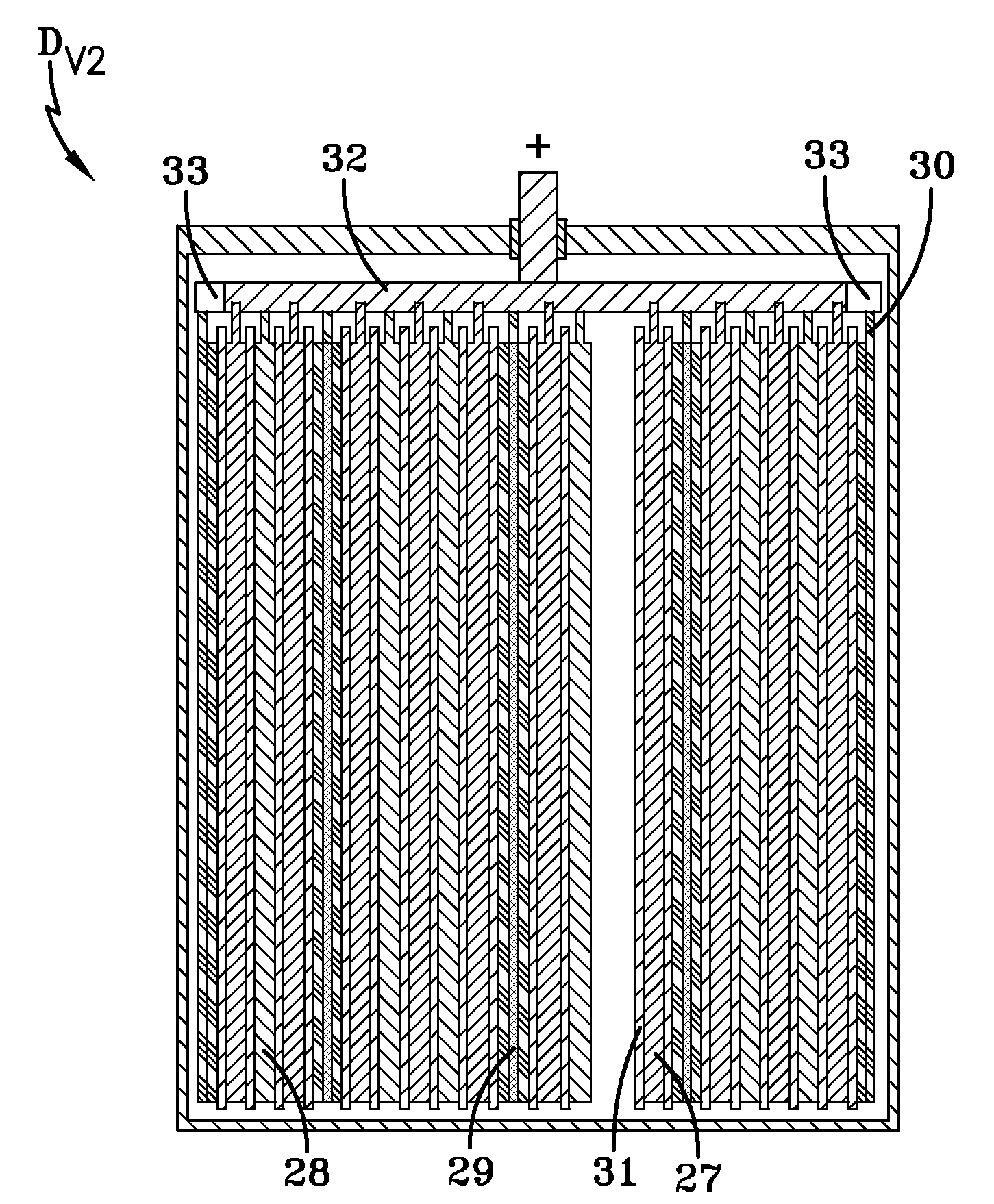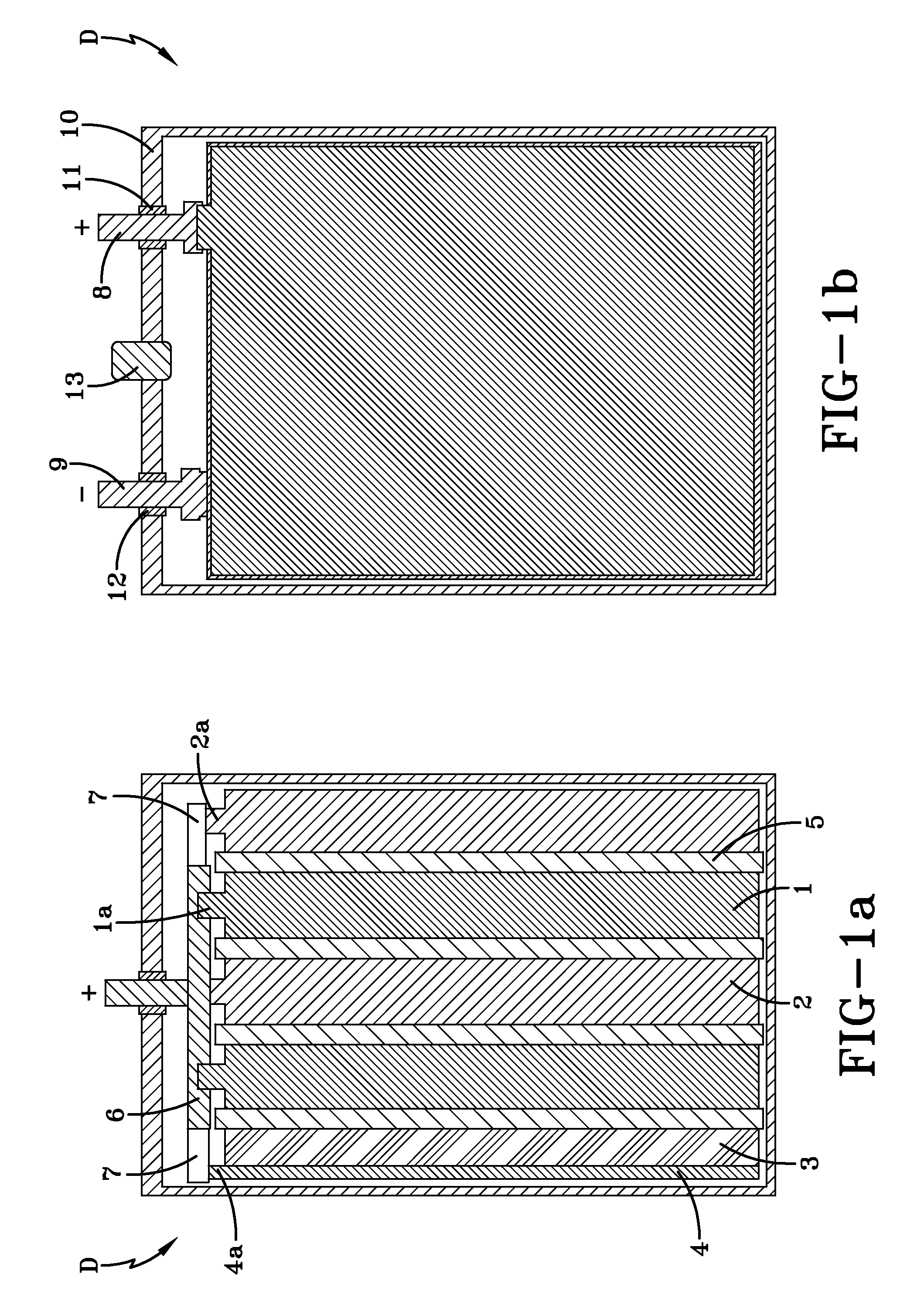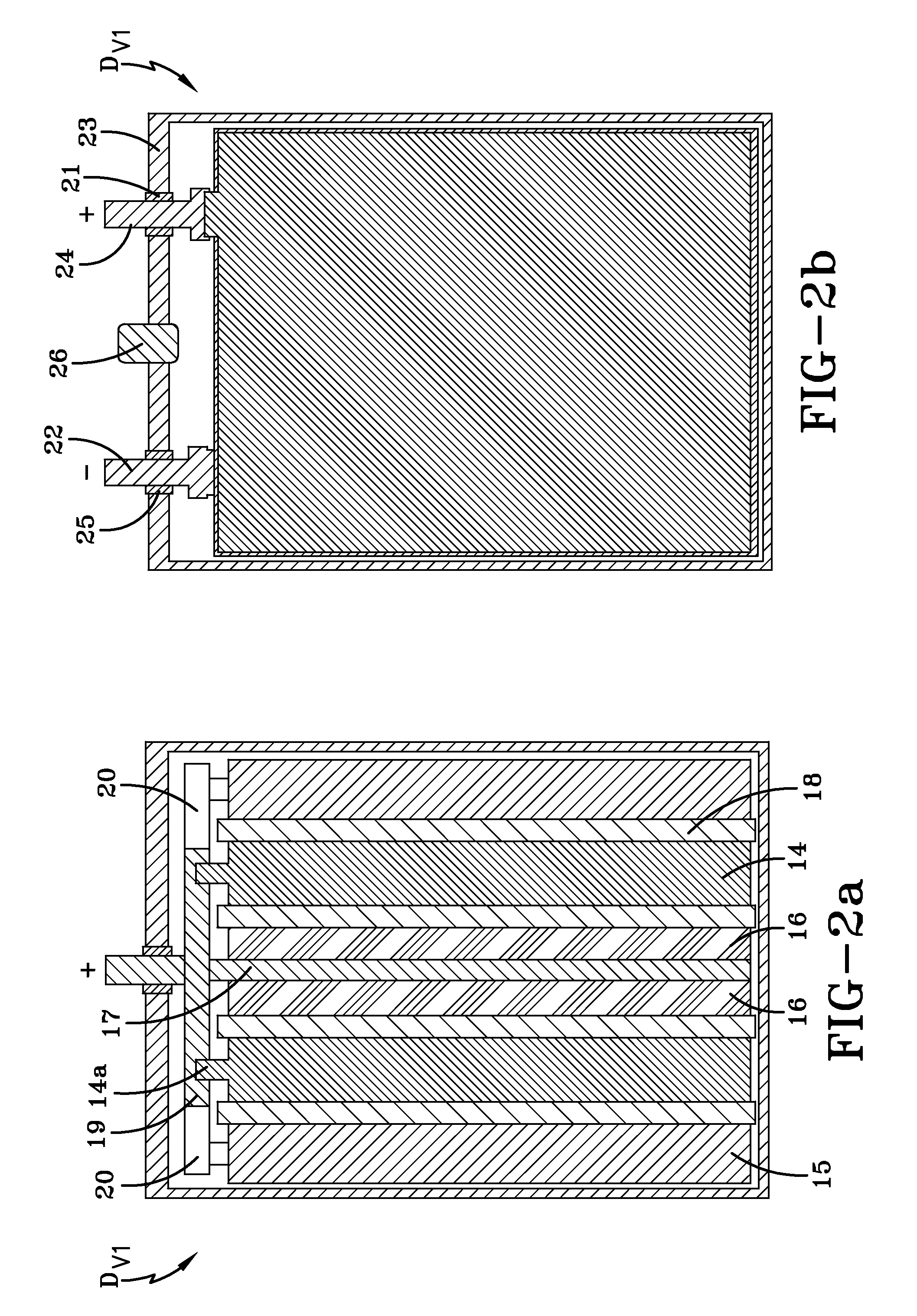Electrochemical supercapacitor/lead-acid battery hybrid electrical energy storage device
a supercapacitor and lead acid battery technology, applied in capacitor collector combinations, electrochemical generators, transportation and packaging, etc., can solve the problems of limiting the scope of application, limiting the use range of the supercapacitor, and even the best of such supercapacitors are burdened with low specific energy parameters and high cost, so as to achieve the effect of low cost and substantial reduction of the cost of the hybrid device of the present invention
- Summary
- Abstract
- Description
- Claims
- Application Information
AI Technical Summary
Benefits of technology
Problems solved by technology
Method used
Image
Examples
specific examples
Example 1
[0052]In order to check the serviceability and identify the power and energy parameters of a hybrid device according to the present invention, a hybrid device HD#1 was manufactured in the form set forth in FIGS. 1a-1b. The hybrid device HD#1 includes two positive electrode plates 1 made of PbO2, with approximate overall dimensions of 135 mm×72 mm×1.4 mm; two spongy lead negative electrode plates 2 with approximate overall dimensions of 135 mm×72 mm×1.8 mm; and one polarizable carbon negative electrode plate 3 with a mass density of 0.56 g / cm3, a specific electric capacitance of 620 F / g, a specific electric resistance of 2.6 Ohm·cm and approximate overall dimensions of 135 mm×72 mm×2 mm. The concentrations of Fe and Mn admixture atoms in the polarizable carbon negative electrode plate were determined to be about 56 ppm and 175 ppm, respectively. The hybrid device HD#1 also includes a current collector 4 associated with the polarizable carbon negative electrode 3. In this exe...
example 2
[0067]A hybrid device HD#2 was manufactured as shown in FIGS. 2a-2b. The hybrid device HD#2 includes two positive electrode plates 14 made of PbO2, with overall dimensions of approximately 135 mm×72 mm×1.4 mm; two spongy lead negative electrode plates 15 with overall dimensions of approximately 135 mm×72 mm×1.8 mm; and two polarizable carbon negative electrode plates 16 with a mass density of 0.65 g / cm3, a specific electric capacitance of 670 F / g, a specific electric resistance of 1.02 Ohm·cm and overall dimensions of approximately 135 mm×72 mm×1.2 mm. The concentrations of Fe and Mn admixture atoms in the polarizable carbon negative electrode plate were determined to be about 5 ppm and 14 ppm, respectively. The hybrid device HD#2 also includes a current collector 17 associated with the polarizable carbon negative electrodes 16. In this embodiment, the current collector 17 has overall dimensions of approximately 135 mm×72 mm×0.26 mm, and is made of lead alloy containing approximatel...
example 3
[0077]In order to research the influence of the concentration of Fe and Mn admixture atoms contained in the polarizable carbon negative electrode on the energy and power parameters and on the self-discharge of a hybrid device of the present invention, an additional exemplary hybrid device HD#3 was constructed. A difference between the design of this hybrid device HD#3 and the first exemplary hybrid device HD#1 shown in FIGS. 1a-1b is that the end spongy lead negative electrode of the first hybrid device is replaced by a polarizable carbon negative electrode. Thus, the hybrid device HD#3 includes two positive electrode plates of PbO2, one spongy lead negative electrode plate, and two polarizable carbon negative electrode plates. The electrodes of this hybrid device HD#3 have overall dimensions that are similar to the corresponding electrodes of the first hybrid device HD#1 as set forth in Example 1.
[0078]The mass density of the polarizable carbon negative electrodes is 0.52 g / cm3, th...
PUM
 Login to View More
Login to View More Abstract
Description
Claims
Application Information
 Login to View More
Login to View More - R&D
- Intellectual Property
- Life Sciences
- Materials
- Tech Scout
- Unparalleled Data Quality
- Higher Quality Content
- 60% Fewer Hallucinations
Browse by: Latest US Patents, China's latest patents, Technical Efficacy Thesaurus, Application Domain, Technology Topic, Popular Technical Reports.
© 2025 PatSnap. All rights reserved.Legal|Privacy policy|Modern Slavery Act Transparency Statement|Sitemap|About US| Contact US: help@patsnap.com



